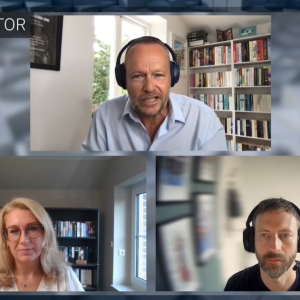Microsoft Corp’s Bob software program for home computer novices is the first in a new wave of computer interfaces, or so says Bill Gates. First there was the graphical user interface, introduced by Apple Computer Inc in 1984, now 10 years later one of Bill’s software development teams has come up with a Bob – a social interface (CI No 2,573). Bob was based on research into how human beings react with computers carried out by two professors at Stanford Univerity, Clifford Nass and Byron Reeves, who studied the extent to which people interact with technology and concluded that people treat their computer as if it were human. Enter Bob, Microsoft’s attempt to satisfy users’ supposed desire for more socially competent technology with which they can interact. Bob and his friends, a set of 14 characters, set out to give the computer a personality. Bob’s friends act as guides, talking to users and giving gestures or verbal prompts to help them when they come unstuck, giving such comprehensive help that Microsoft hopes users will never need to consult a manual or tutorial again. Characters include Scuzz, an irreverent rat that strums a loud guiter chord when the printer runs out of paper, Ruby the parrot, rumoured to be Bill’s favourite, Rover the dog and a worm named Digger. Each offers a different degree of intervention or guidance to appeal to users of different levels of computer literacy. Users supposedly pick the character most suited to their own personality. So you can opt for Java, a highly excitable coffee-swilling dinosaur, or Hopper, a bunny with a lollipop, who is submissive. Bob dispenses with menus and windows and as well as the cartoon characters, puts up images of rooms in a home, beginning at the front door. By clicking the mouse, the user opens the door and enters one of the various rooms in the home.
Commonsense maybe
From within any room, users can then access any one of eight programs under Windows or MS-DOS. These include Letter Writer, Calendar, Checkbook, Household Manager, Address Book, Electronic Mail, Financial Guide and the GeoSafari, a multi-media quiz game designed to teach children geography. Each program has semi-intelligence so a character will pop up and suggest a quicker method of doing things. If, for example, a user is in the letter-writing program and wants to block a paragraph and tries to do this by blocking each word individually, the character will suggest blocking all of the text at once. Commonsense maybe, but evidently computer novices need such help. With Bob as application interface, home users can customise their computer screen as one of 40 different virtual rooms, designed obviously to make them feel even more at home with their now friendly computer. Programs are launched by clicking the mouse over various icons so users can access the cheque-writing function by clicking on the image of a chequebook on a desk. That users may find their social interface highly patronising or indeed intensely irritating after the initial novelty value has worn off does not seem to be major issue for Microsoft. It intends Bob to be a help package for technophobes and neophytes. And according to Paul Tollet, a consumer business manager at Microsoft, there are a lot of both out there. He estimates that roughly 80% of all calls to Microsoft help desks involve problems with using particular functions. Bob is expected to cut this number quite dramatically. However questions have been raised as to just how big the market would be for Bob given that it could potentially eat into sales of the Microsoft Works home business package with word pro cessing and spreadsheet package and database capabilities. Another potential drawback with Bob is that it needs at least an 8Mb 80486 with 30Mb of free hard disk, effectively more computing power even than Windows95. And if you want to send electronic mail or use the Checkbook’s online-payment feature you will of course need a modem. Microsoft does not see any of these specifications as a major obstacles to Bob’s success. According to Tollett
most home users in the US have computers with 8Mb and a large proportion of them have modems too. Tollett says that Bob is too culturally specific to catch on in Europe and if a UK version comes out it will need modification to conform to British culture. He also believes the European market for computers in the home is still relatively immature so demand for Bob is a few years away. How successful Bob becomes remains to be seen but the technology behind it is likely to find its way into other Microsoft offerings, such as its interactive television and wireless communications projects. – Krishna Roy






